You’re on the home stretch! The activities for end of school year fun are abundant. You have a couple of remaining weeks with students, and the hurried frenzy of to-do list items is beginning! Submit grades, clean-out the room, come up with an inexpensive student gift… It’s a lot, I know.
There’s one end-of-year gift you can give your students, which they won’t ever see, but will benefit them in big ways in the next school year. It’s taking a minute to fill out some quick (and meaningful) learner profiles to pass on to the next grade level teachers.
You’re so super busy with end-of-year closure tasks, but if you can fit this one in, you’ll find that it’s one of the best activities for end of school year wrap-up that you could spend time on! Read on to find out how to create truly valuable learner profiles.
End of Year Strategies for Teacher Collaboration
So, there are a few strategies for teacher collaboration for the end of the year. Some schools teams have final data talks, reviewing assessment results and goal-setting for the coming year. Some schools promote vertical grade-level talks, giving teachers a chance to collaborate and come to greater understandings of how grade-level content differs and connects as students move up.
Transition Cards
Additionally, many elementary schools ask teachers to fill out a form, often called a “transition card,” for each of their students. One of the simplest strategies for teacher collaboration across grade levels, this form usually includes fields for teachers to fill in:
- Basic information
- Reading level/ability
- Writing level/ability
- Standardized test scores
- Grades
- Notes on which students to avoid placing in the same class for the next year
- General teacher observations, which (let’s be honest) often get pared down to fluffy remarks such as “Great student, hard worker!” or comments on behavior such as “Often distracted, needs positive reinforcement.”
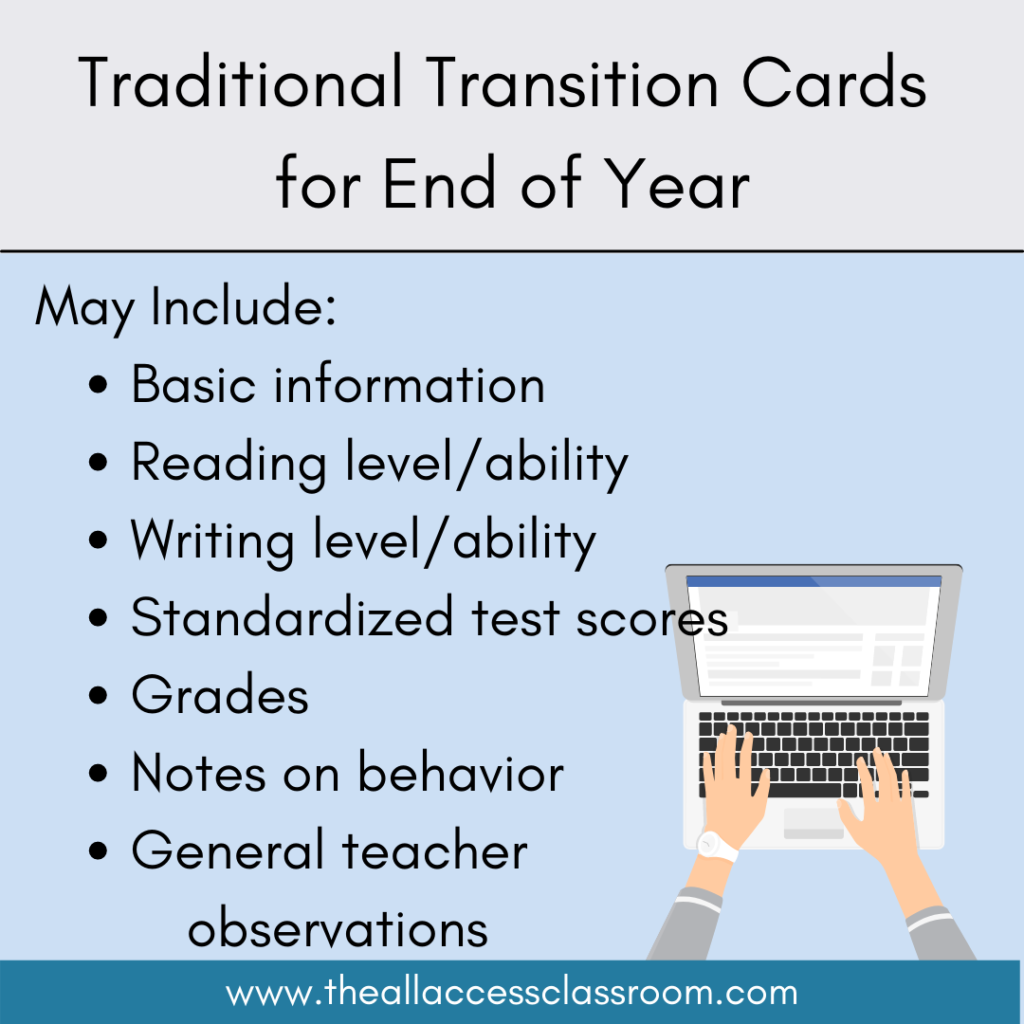
These transition forms get passed on to whichever teachers will have the students in the school year to come. They can be beneficial in helping with initial differentiation or grouping. They might help a bit with seating arrangements, or initial behavioral supports.
Some teachers love getting these cards, soaking up each comment to tuck away for mental reference during the first weeks of school. Other teachers loathe the feeling that they might be tempted to place premature judgement on a student. They are aware that students have spent the year in a completely different context, and may have changed over the summer anyway.
One thing is clear, however, about these transition cards. They are primarily focused on communicating data and deficit. They leave teachers with a shockingly incomplete picture of an individual student. And often, those features getting the focus are all representative of performance related to peers, or difficulties faced by the previous teacher. Helpful in some ways, but potentially limiting (or even detrimental) in other ways.
Shifting the Focus to Student Assets and Truly Helpful Information
As a classroom teacher, you spend the entire school year getting to know your students. Their interests, their backgrounds, their home situations, their academic strengths. You have built a relationship with them, and there are things that only you as their teacher know. You’ve put in a lot of effort to come to these understandings!
Our students of color, English learners, and those in poverty, have such a tapestry of interwoven factors–unique to each individual–that influence their learning. They each come to us with assets – strengths and skills that, if tapped into, can benefit their learning process and enrich a classroom community.
You know all the great qualities and abilities each student brings to the table. But what happens when the students move on?
If you are an ESL/ELD/ESOL specialist, you may be quite familiar with the disconnect that often occurs from year to year. Teachers work hard to determine students’ needs, find successful strategies, and come to a rich understanding of student assets. But all this can be lost over the summer, if there is a lack of communication, and the student’s new teacher has to figure it all out again.
How great would it be if you started day 1 of school with a heads up, not just about scores and behavior problems, but about what your new students are great at? What they love? Their unique abilities and environmental resources at home?
What if the traditional “transition card” could become a celebration of a students’ assets, and a true resource to the teacher-to-be?
Assets-Based Learner Profiles
Here’s what I propose. Let’s start a new trend: Assets-Based Learner Profiles. Yes, perhaps the transition cards will remain. But what if you were to take an hour (while the class watches that end-of-year movie) to share some of the WEALTH of understanding you have in your head about your students. It’ll be a fun way to celebrate the growth you’ve seen in your students, and it’ll be the best end-of-year gift ever to your colleagues!
Maybe you don’t have time to complete a learner profile for every student. Consider: Which students took you until Christmas to start “figuring out” or “learning what works”? Which are students that you initially misunderstood, but came to be so proud of? Are there areas where you predict some information might lessen a pre-existing bias or presumption? Those are the students to create a learner profile for.
It doesn’t need to be a novel. Just a bulleted list that can be viewed at-a-glance.
Possible Information to Include in an Assets-Based Learner Profile:
- Educational history
- Languages spoken
- Interests
- Accomplishments or ways the student grew this year
- Positive personality or social-emotional traits
- What you admire about the student
- Meaningful friendships the student developed
- How the student’s family supports their learning, even despite limitations
- Which mode of contact worked best this year for home communication
- What type of academic activities or lessons the student engaged with most
- What supports, scaffolds, or modifications were needed so that the student could access the content and be successful
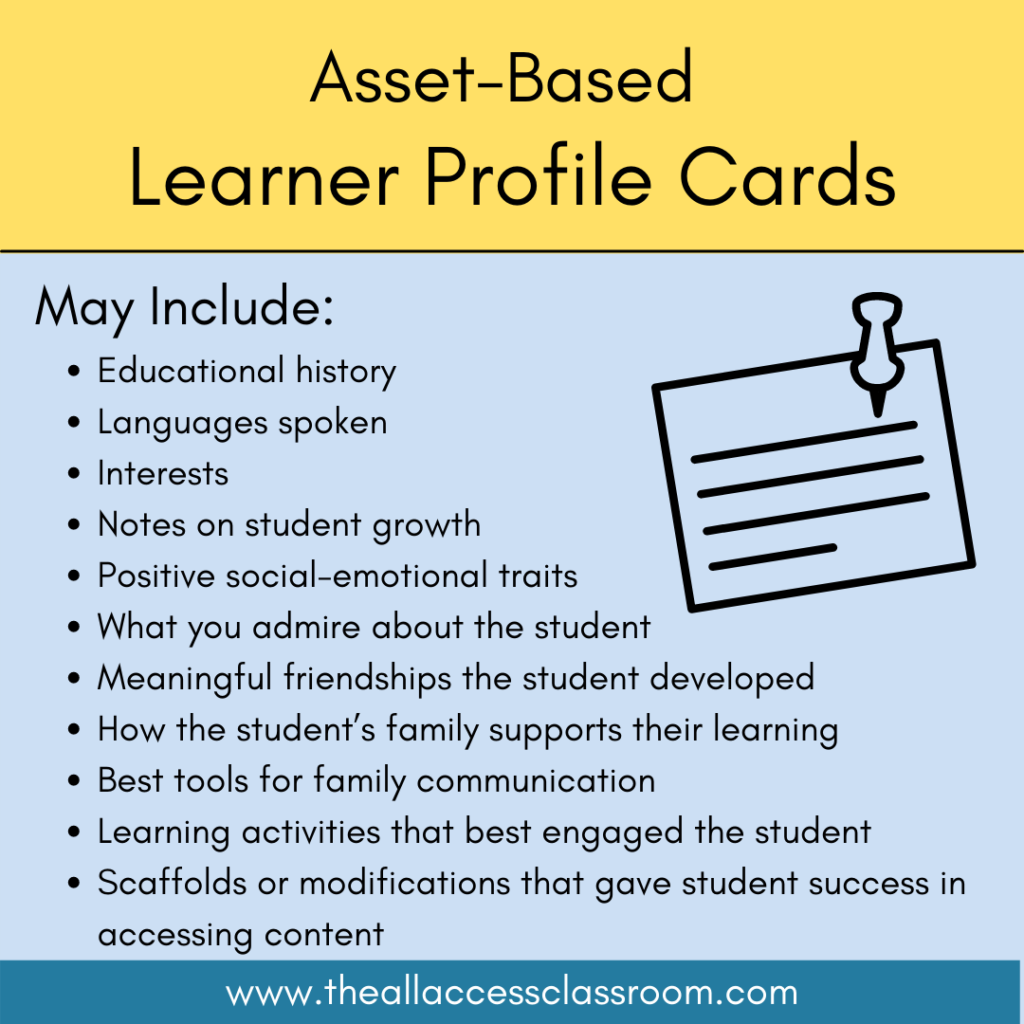
You could set this up in a digital format to share with teachers, or print out a half-sheet template to take your notes on in those free seconds you have. Trust me, your next-grade-up colleagues will love you for it!
I made a quick digital template for you to use, if you’d like! It’s highly editable, and you can make your own copy here!
Have fun with all the activities for end of school year fun, but consider this one quick step that will make a big difference for your students next year!
Related Resources:
- Boost English Learners’ Summer Growth (The All-Access Classroom)
- Learner Profiles (The Edvocate)
- Developing an Asset-Based Approach to Teaching (Edutopia)
- Free digital summer journal for students (see below!)
Well done this year, teacher friend! Have a wonderful summer!
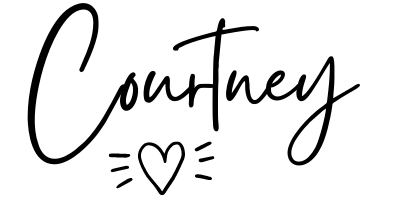

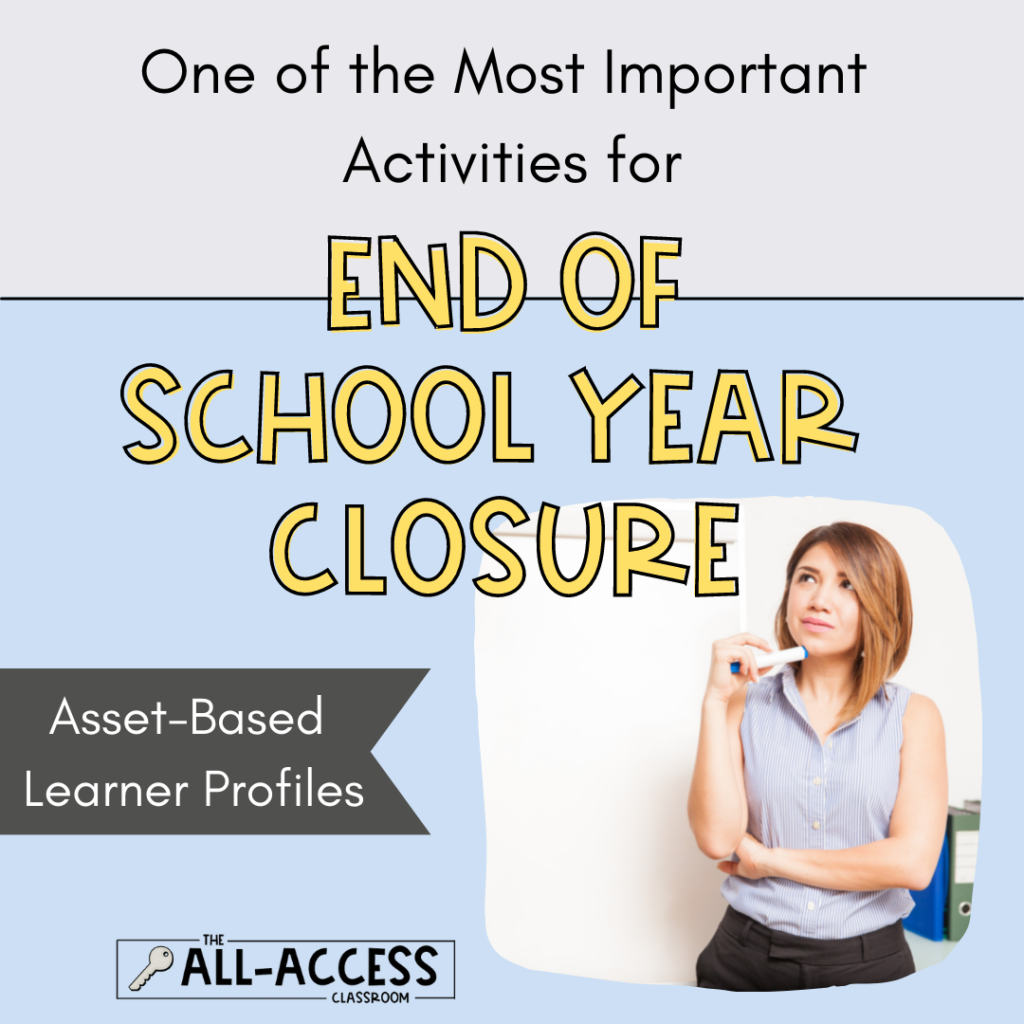
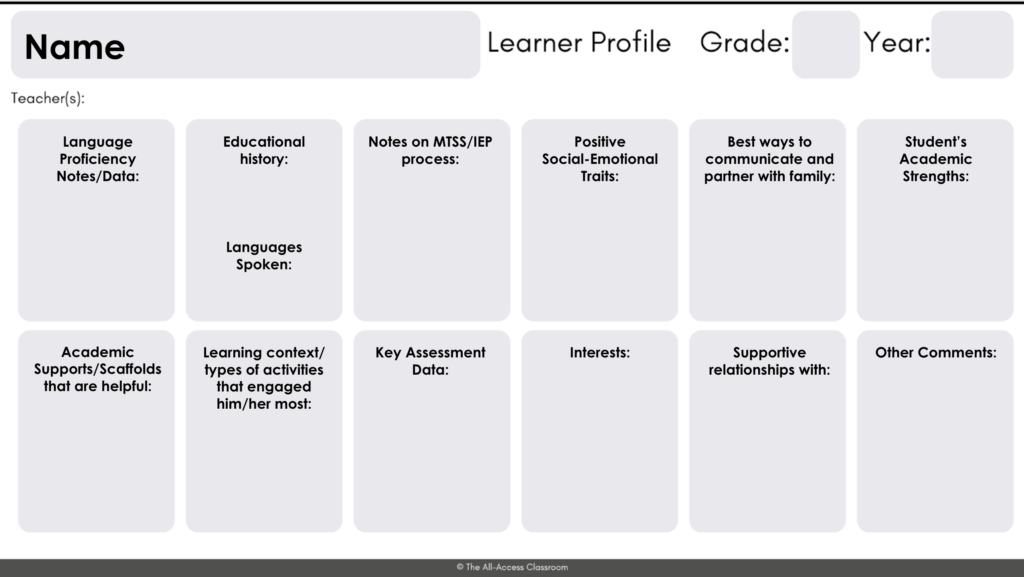
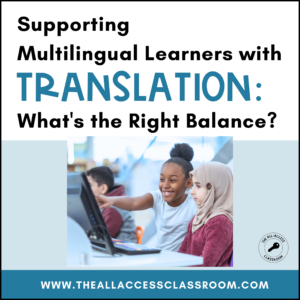
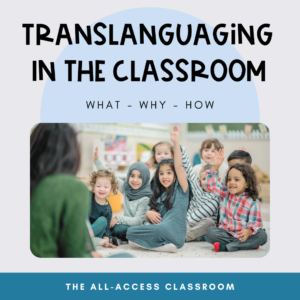
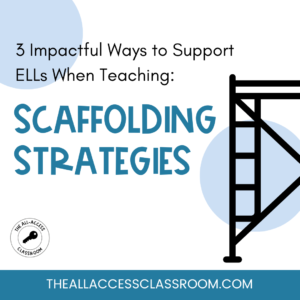

One Response